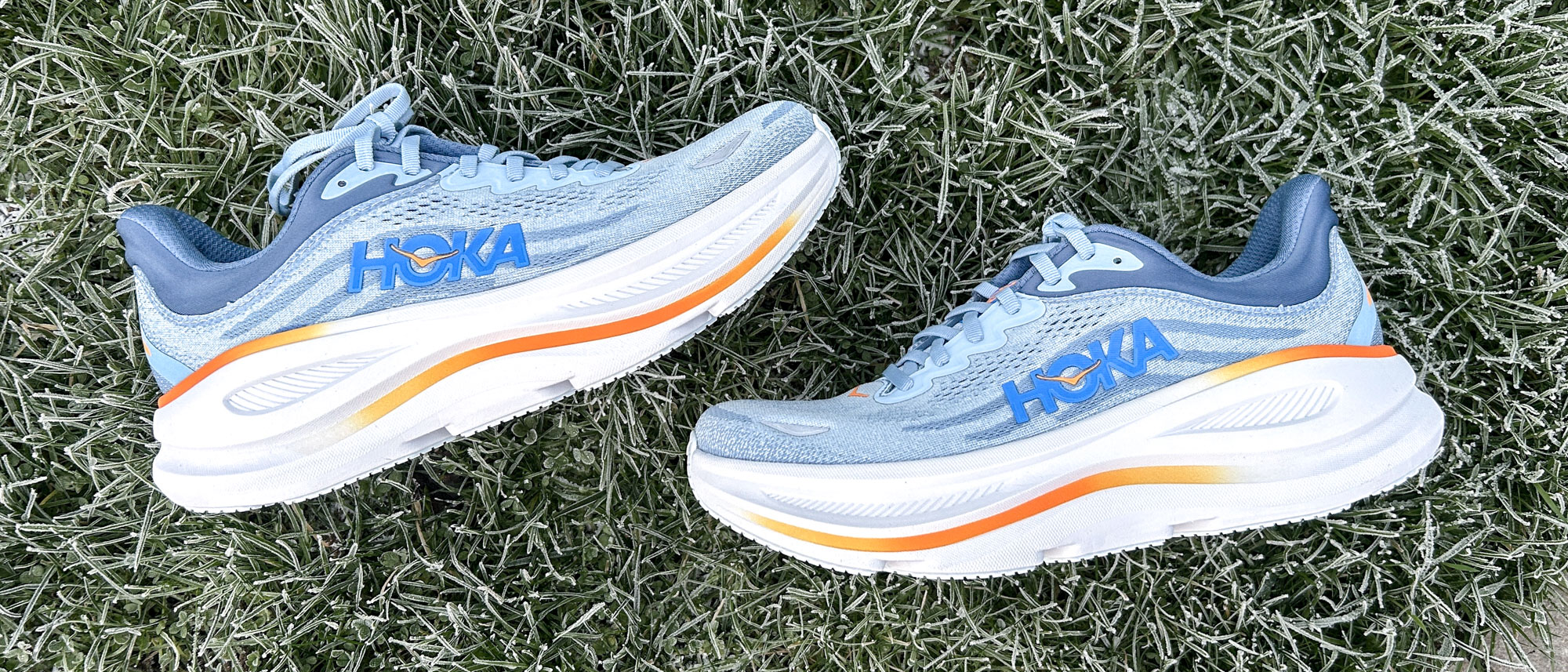Tom's Guide Verdict
The Hoka Bondi 9 is the most cushioned shoe in Hoka’s range and offers a lot of comfort and protection for easy runs as well as walking. However, despite a new midsole foam it doesn’t offer much energy return for faster runs and there are more impressive cushioned shoes available from both Hoka and others.
Pros
- +
Improved midsole foam
- +
Comfortable cushioning
- +
Stable for a max-stack shoe
Cons
- -
Too bulky for faster runs
- -
Rocker is not as smooth as on other Hokas
Why you can trust Tom's Guide
The Bondi was the original max-stack running shoe, and the one that really helped Hoka stand out from the crowd when it launched in 2010. Nowadays every brand is pushing max-cushioned cruisers and the Hoka Bondi 9 risks getting lost in a sea of similar shoes.
Hoka has made some good updates to the shoe compared with the Hoka Bondi 9, using a supercritical EVA foam in the midsole which makes the shoe lighter even as it gains stack height. It will please long-term fans of the line and maybe win over a few new fans.
It’s still a heavy shoe, however, and while it delivers a comfortable ride it isn’t versatile even compared with other max-cushioned shoes. In my Hoka Bondi 9 I’ll compare it to the Hoka Skyflow and the best running shoes from other brands.
Hoka Bondi 9 review: price and availability
The Hoka Bondi 9 launched on 15 January 2025 and costs $170 in the U.S. and £160 in the U.K., which is a $5 price rise on the Bondi 8 and does make the Bondi 9 one of the more expensive cushioned shoes on the market. It’s also the most expensive cushioned shoe in Hoka’s range, with the Skyflow and Hoka Clifton 10 both being more affordable options.
Hoka Bondi 9 review: design and fit
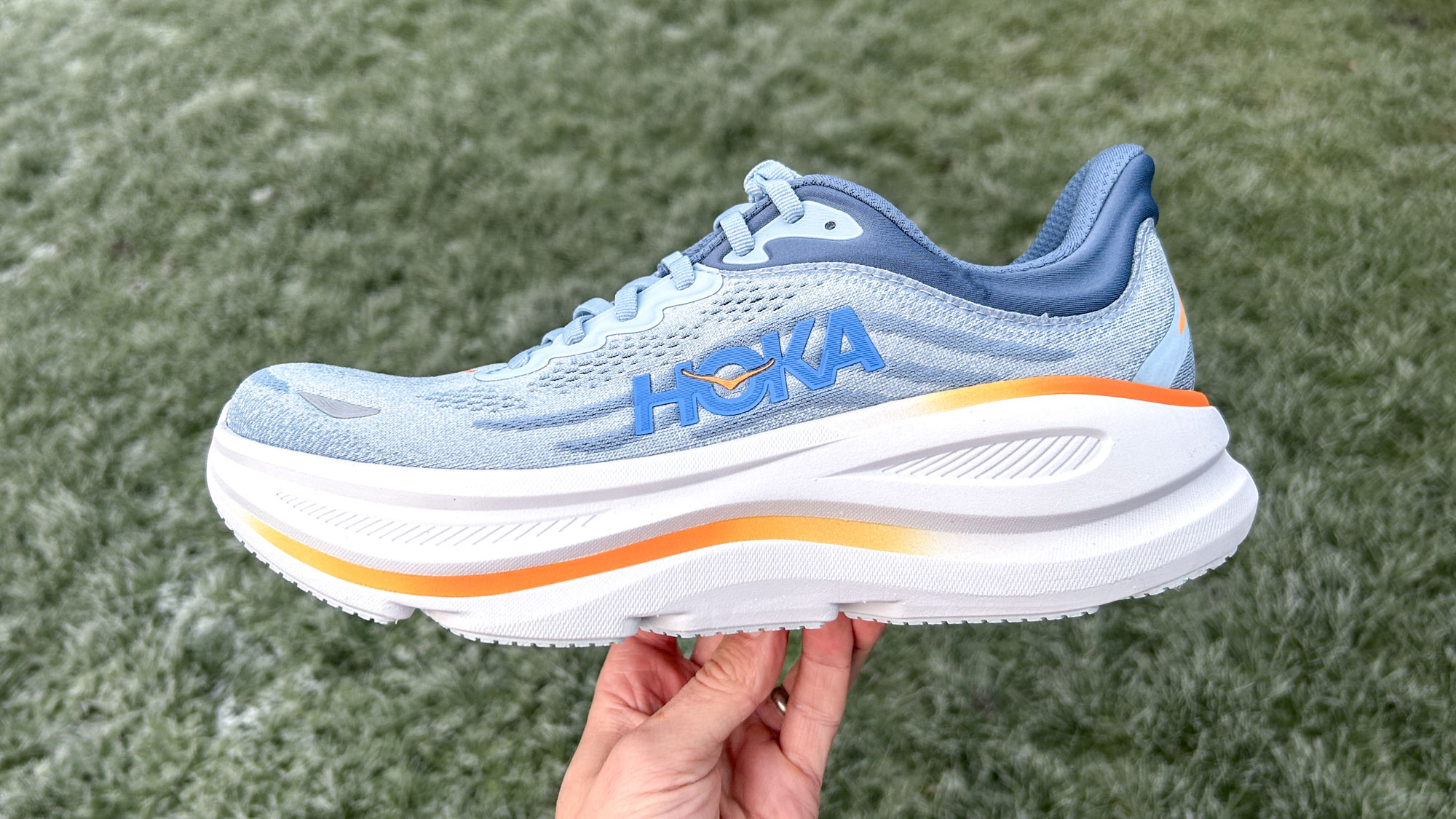
The Hoka Bondi 9 is currently available in six colors, including the Drizzle / Downpour color I tested — an apt name for a shoe I used in the British winter. I found that the Bondi 9 fit me well in my normal running shoe size, and there are three widths available for those who might need a wider shoe.
Hoka has added 2mm to the stack height of the Bondi 9 compared with the Bondi 8, and the new shoe stands 43mm tall at the heel and 38mm at the forefoot in the men’s shoe, and 42mm at the heel and 37mm at the forefoot in the women’s, keeping the same drop as most Hoka shoes.
Despite this rise in height the shoe drops in weight, tipping the scales at 11oz in a US men’s 9.5, which is 0.4oz lighter than the Bondi 8 in the same size. The weight is in line with other big cushioned options like the Asics Gel-Nimbus 27 or Saucony Hurricane 24.
Upper
The Bondi 9 has an engineered mesh upper with lots of padding around the heel and collar to increase its step-in comfort. There is an internal heel counter at the back of the shoe to add extra support, and I found the upper comfortable and breathable throughout my testing.
Midsole
The biggest update to the Bondi 9 is found in the midsole, which is now made from a supercritical EVA foam as opposed to the compression-molded EVA used on past models. This nitrogen-infused material is lighter and more responsive, and was overdue being used in the Bondi after Hoka used it in the new Skyflow shoe in late 2024.
It’s not the softest foam you’ll find on a max-cushioned shoe, but it’s certainly comfortable, and it seems built to last many hundreds of miles without compressing too much. The Bondi 9 also has Hoka’s usual rocker shape to ease you through your footstrike, and sidewalls of foam your foot sits within to boost stability in such a high stack shoe.
Outsole
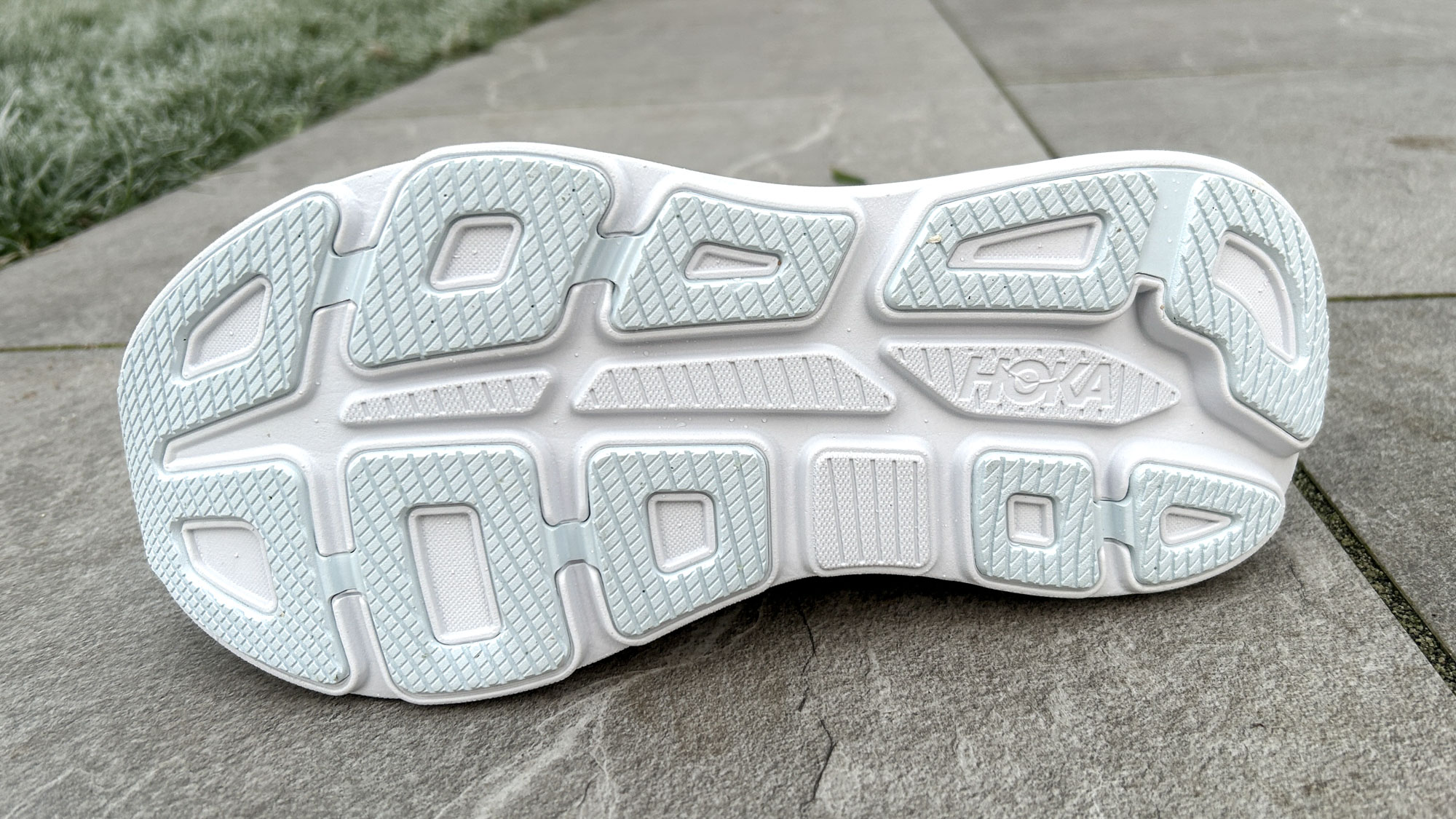
A thick layer of rubber is used to cover the main impact areas on the bottom of the Bondi 9, so although there is some exposed foam, I have no doubts that this will be a very long-lasting shoe just as previous models have been.
Hoka Bondi 9 review: running performance
I wasn’t a fan of the Bondi 8, which always felt heavy and lifeless on the run for me, but I have been a fan of Hoka’s supercritical foam in other shoes like the Skyflow and Mach 6, so I harbored hopes the Bondi 9 would be a big improvement on the 8.
It is an improvement for sure, but after doing a range of training runs in it I wouldn’t call myself a big fan of the Bondi 9 either. I do think that fans of the Bondi line in general will like the new update, but it’s still a little big for my taste, and I didn’t find the rocker on the shoe produced as smooth a ride as it does with the Skyflow, Mach or Clifton shoes.
I mainly used the Bondi 9 for easy daily training, including a couple of recovery runs the day after hard sessions. With the latter it definitely provides a lot of welcome support and cushioning for tired legs, and would work well in a shoe rotation alongside lighter, faster options.
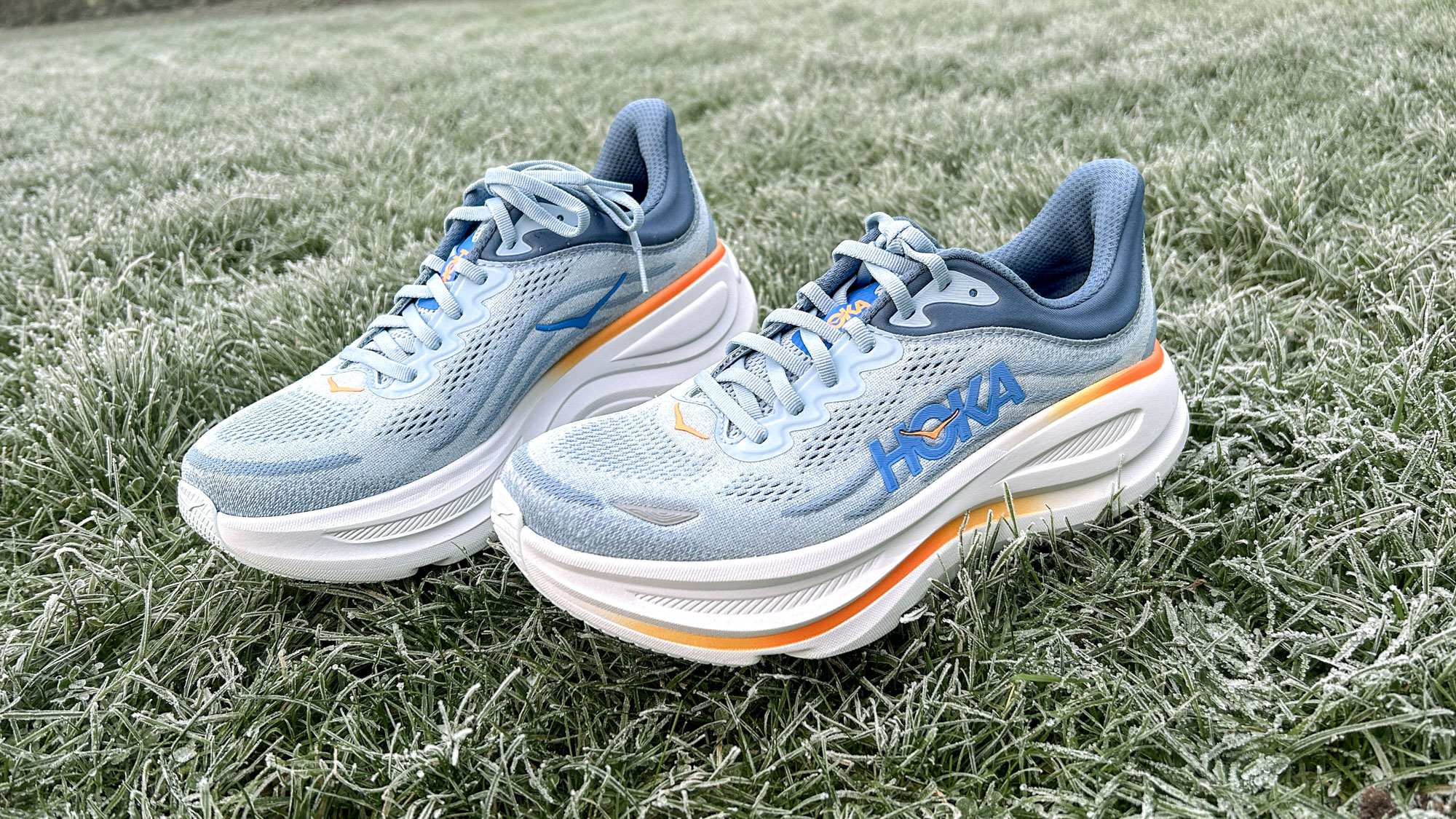
You’ll need those faster options because the Bondi 9 is not a versatile shoe. It felt clunky for me when I moved beyond easy pace, even compared with other cushioned shoes of a similar weight like the Asics Gel-Nimbus 27.
I expected a bit more response from the supercritical foam in the midsole, but while its a livelier material than the foam in the Bondi 8, it didn’t really bring much extra punch to the ride. The Bondi 9 remains a shoe built specifically for relaxed easy runs, and it does that job well, but lots of shoes can do the same job while offering a bit more.
Alongside running, the Bondi has always been a popular line for general use, and it’s definitely still a good option for people who spend a lot of time on their feet and do a lot of walking each day.
Should you buy the Hoka Bondi 9?
The Hoka Bondi 9 is a shoe that does the job it’s designed to do in protecting the legs well and being comfortable on easy runs. If you’re a long-term Bondi fan you’ll like the latest version of the shoe, and it’s a big upgrade on the Bondi 8.
However, it feels a bit too limited for me. The ride doesn’t bring a lot of bounce or softness to daily runs, and other cushioned shoes are more fun, or versatile, or both. That includes the Hoka Clifton 10 and Hoka Skyflow, both of which I enjoy more for runs at any pace.
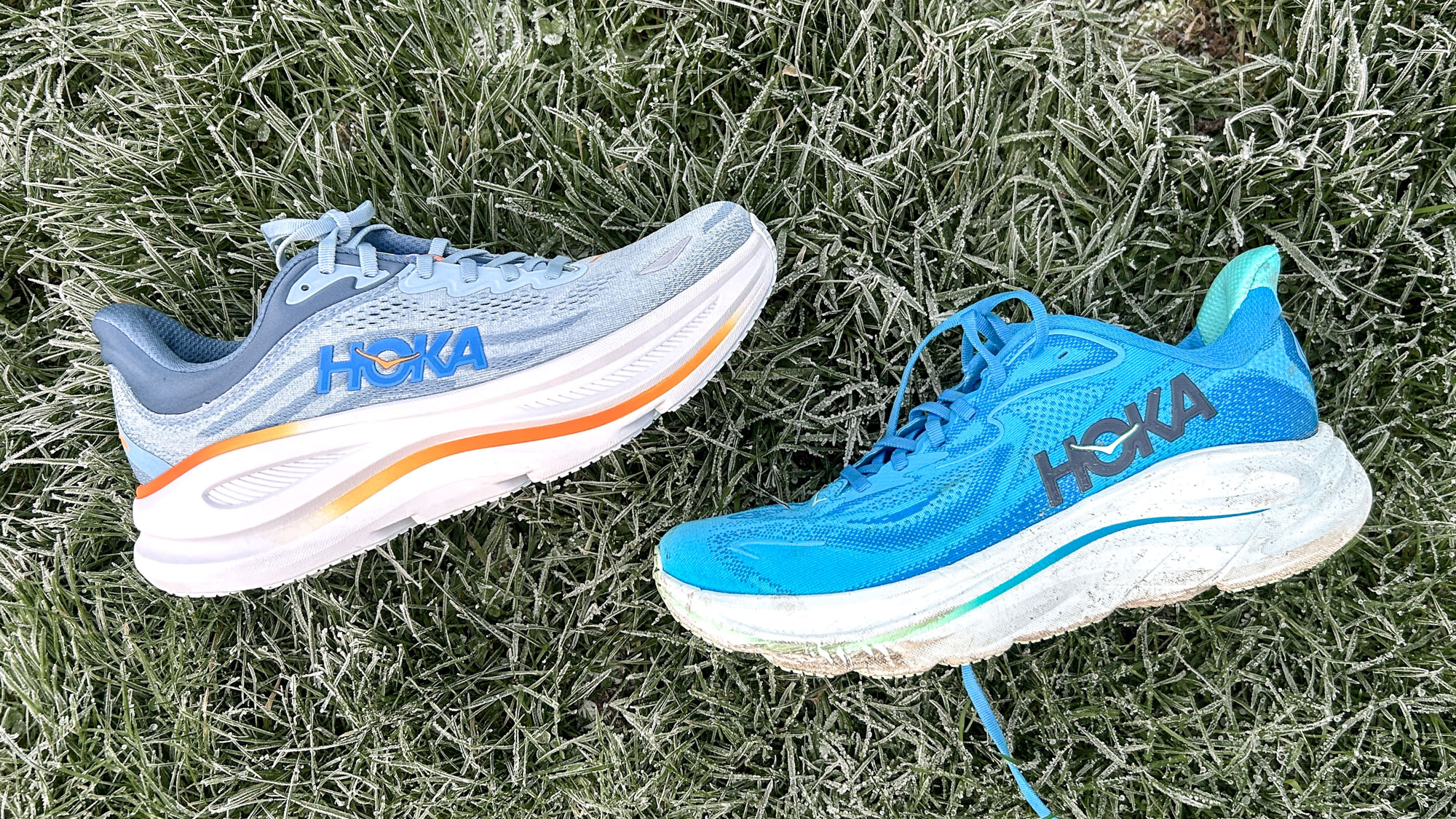
Other brands might have taken their cues from Hoka in designing max-stack cruisers, but they now have better options than the Bondi in this category. The Asics Gel-Nimbus 27 has a similarly comfortable ride with a better transition off the toes, and the Saucony Hurricane 24 is even cushier than the Bondi and has more bounce off the forefoot.
The Brooks Glycerin Max is another impressive max-cushioned shoe that matches the Bondi 9 for comfort while having a more energetic feel, and the New Balance 1080v14 is a lighter and springier cushioned option for daily training.
All of these cushioned shoes have impressed me more than the Bondi 9 as enjoyable easy run cruisers that have a more energetic feel on faster runs too. The Bondi 9 is by no means a bad shoe, but it no longer stands out for me either within Hoka's line-up or on the market at large.
More from Tom's Guide

Nick Harris-Fry is an experienced health and fitness journalist, writing professionally since 2012. He spent nine years working on the Coach magazine and website before moving to the fitness team at Tom’s Guide in 2024. Nick is a keen runner and also the founder of YouTube channel The Run Testers, which specialises in reviewing running shoes, watches, headphones and other gear.
Nick ran his first marathon in 2016 after six weeks of training for a magazine feature and subsequently became obsessed with the sport. He now has PBs of 2hr 27min for the marathon and 15min 30sec for 5K, and has run 13 marathons in total, as well as a 50-mile ultramarathon. Nick is also a qualified Run Leader in the UK.
Nick is an established expert in the health and fitness area and along with writing for many publications, including Live Science, Expert Reviews, Wareable, Coach and Get Sweat Go, he has been quoted on The Guardian and The Independent.
